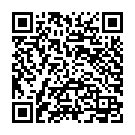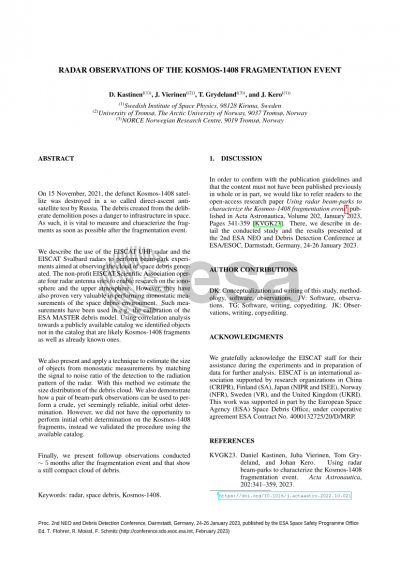Document details

Abstract
On the 15th of November, 2021, the defunct Kosmos-1408 satellite was destroyed in a so called direct-ascent anti-satellite test by Russia. The debris created from the deliberate demolition poses a danger to infrastructure in space. As such, it is vital to measure and characterize the fragments as soon as possible after the fragmentation event. We describe the use of the EISCAT UHF radar and the EISCAT Svalbard radars to perform beam-park experiments aimed at observing the cloud of space debris generated. The non-profit EISCAT Scientific Association operate four radar antenna sites to enable research on the ionosphere and the upper atmosphere. However, they have also proven very valuable in performing monostatic measurements of the space debris environment. Such measurements have been used in e.g. the calibration of the ESA MASTER debris model. Using correlation analysis towards a publicly available catalog we identified objects not in the catalog that are likely Kosmos-1408 fragments as well as already known ones. We also present and apply a technique to estimate the size of objects from monostatic measurements by matching the signal to noise ratio of the detection to the radiation pattern of the radar. With this method we estimate the size distribution of the debris cloud. We also demonstrate how a pair of beam-park observations can be used to perform a crude, yet seemingly reliable, initial orbit determination. However, we did not have the opportunity to perform initial orbit determination on the Kosmos-1408 fragments, instead we validated the procedure using the available catalog. Finally, we present followup observations ~5 months after the fragmentation that show a still compact cloud of debris.
Preview


